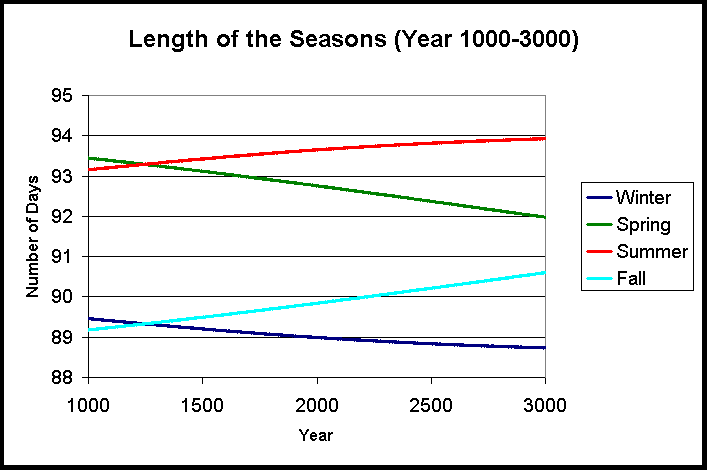
Due to the pull of the other planets in the Solar System, the orbit of the Earth around the Sun is slowing precessing {rotating/drifting around a vertical axis}. There is a close approach distance to the Sun (perihelion) and a far point from the Sun (aphelion). With the axis of the Earth roughly pointing in the same direction (over a few thousand years), these points are then moving relative to the equinoxes and solstices.
Thus, over time, the duration (number of days) for each of the seasons changes. For example, right now, Summer is longer than Spring, which is longer than Fall, which is longer than Winter. But, has it always been that way ... NO! In roughly the year 1246, Winter and Fall were about the same length, and Spring and Summer were the same.
Let's take a look at some of the lengths of the seasons for the years between 1000 and 3000 :

That graph raises some intriguing questions, huh ... it looks like Summer was shorter in the past .. how short? It also looks like Spring is getting shorter in the future .. how short? Well, let's take a longer view of the process :
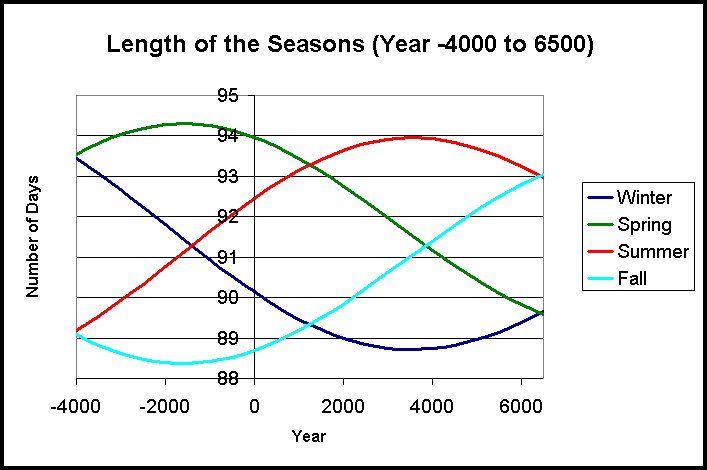
In about the year 3500, Winter will reach its shortest duration ... until about 6427, and then Spring becomes shorter than Winter!
Let's take a look at just the date of the Spring (Vernal) Equinox ... how does that change over time (is it always on the 21st of March?).
Here is a graph of the Vernal Equinox date in March from the year 1000 to the year 3000 :
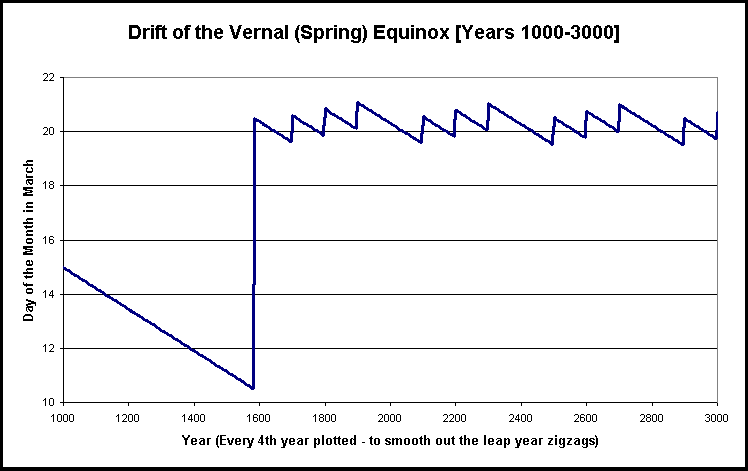
Whoa - what the heck happened just before the year 1600? Well, that's why we started using the new Leap day calculations to include 4/100/400 adjustment - the Gregorian Reformation. (If that hadn't happened, Spring would have drifted earlier and earlier in the year!).
Let's take a closer look at that second half of the graph :
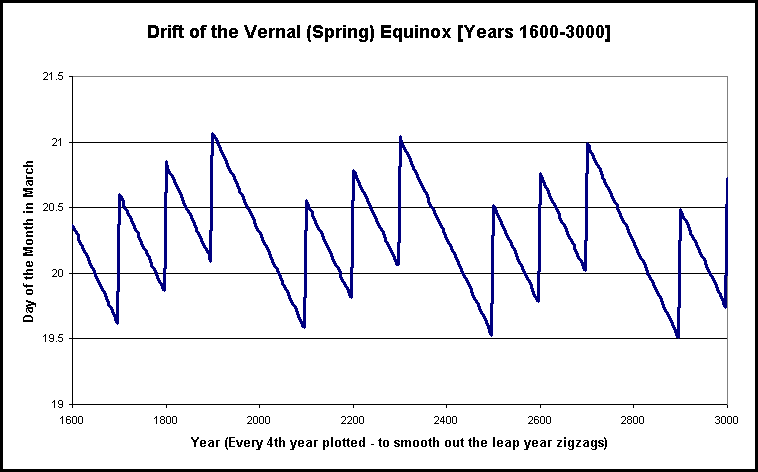
Note, I've plotted data every 4 years - to keep it a little cleaner (you'll see why in a minute). Notice the large zig-zags (year 1700, 1800, 1900, etc) - that is the 100 year leap rule. But, something else happens at the year 2000, and 2400, and 2800 ... yup, that's the 400 year rule kicking in (saying you should have a leap year, when the 100 year rule says you shouldn't). Notice that without the 400 year rule, the date would drift later and later in the year. But, notice the lowest peaks (near 1700, 2100, 2500, 2900) ... they are drifting earlier in the year. In 2044, the Spring Equinox will occur on the 19th, first time since 1796.
We can zoom in further .. we can see the drift .. until the century correction .. but, still moving later over time (we will need new correction sequence for Leap Days in about the year 4000).
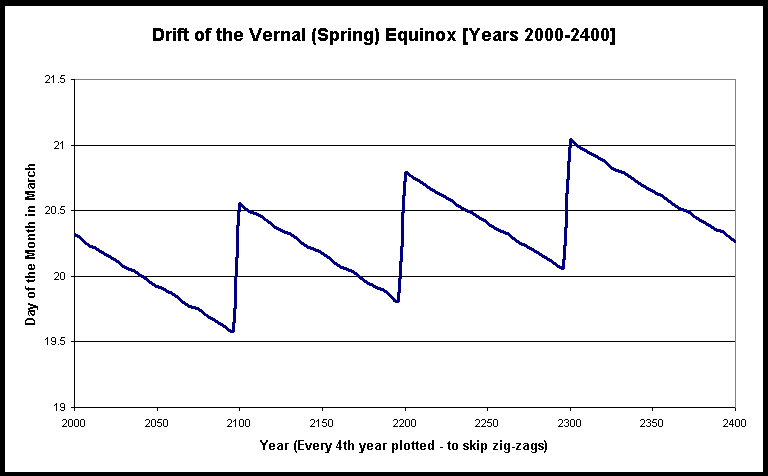
Now we can see the slide of the Equinox within the 4 year period - then the century correction - then the slide back (but, overall rising).
And the cosmic dance continues ....
How did Dr. Scott make those calculations? Using algorithms from Jean Meeus's book "Astronomical Algorithms" (he is an astronomical god!), the graphs were created by outputting the data to Excel.
Return to the Astronomy Main Page
Of the 382 visitors so far, you are the most recent!